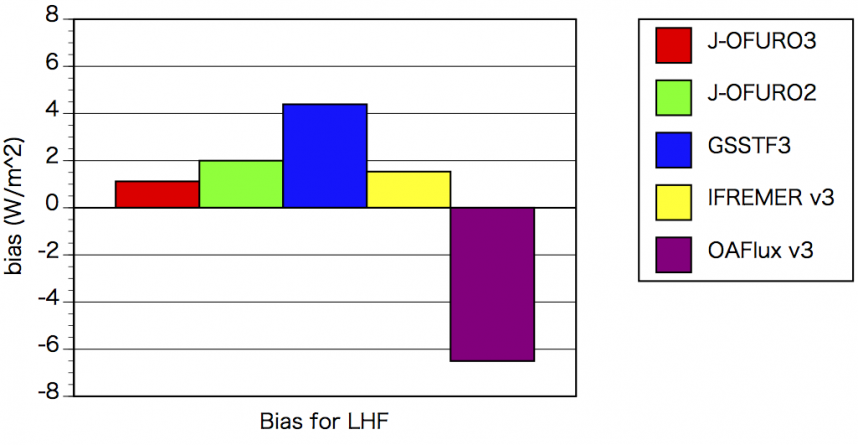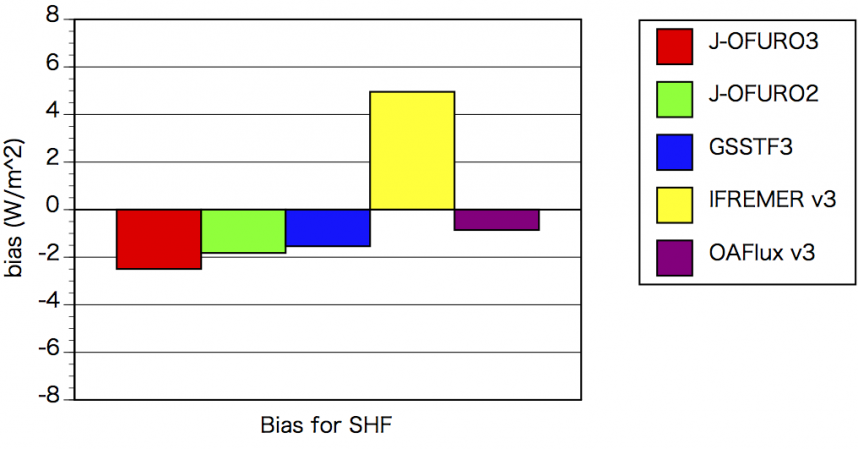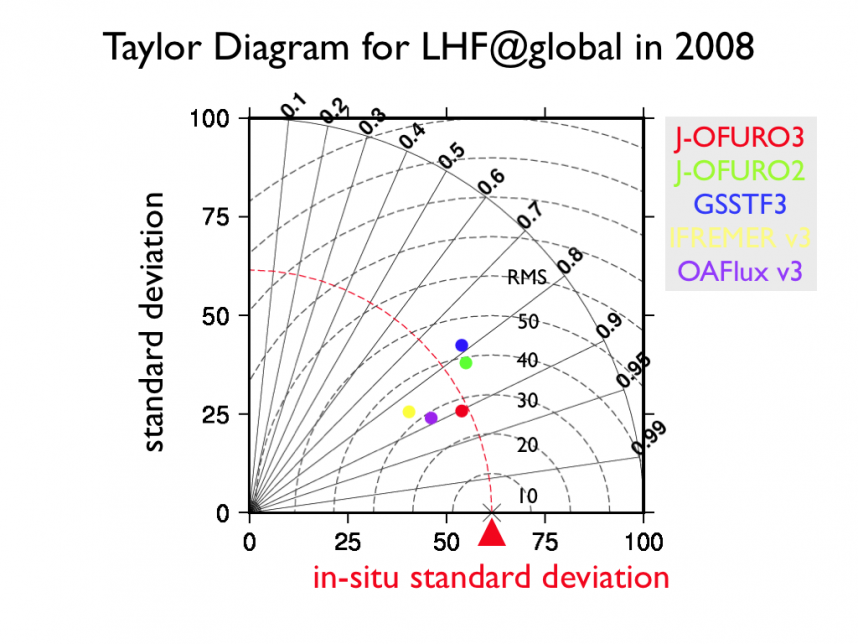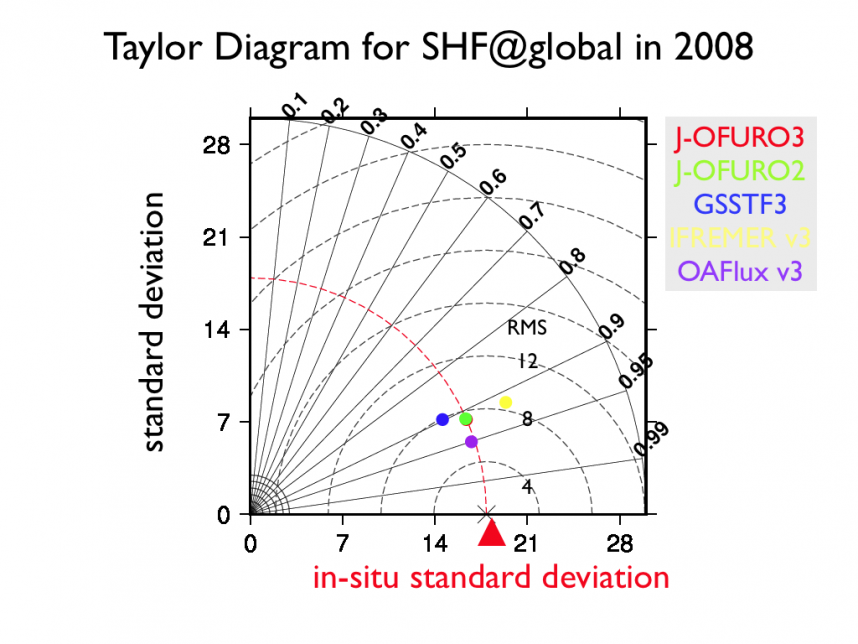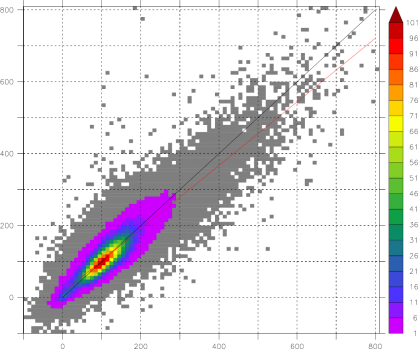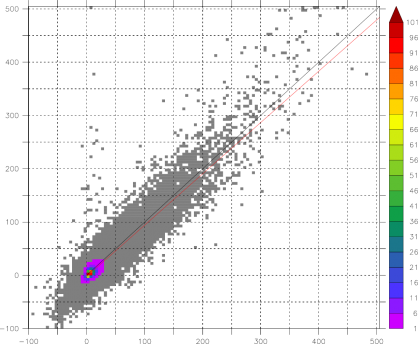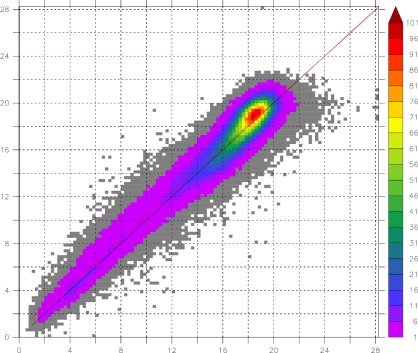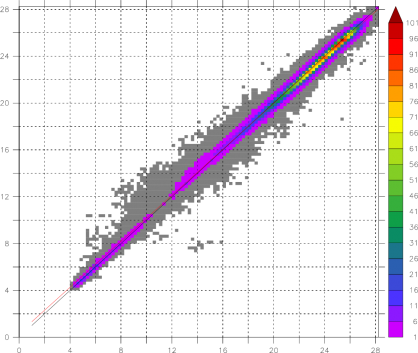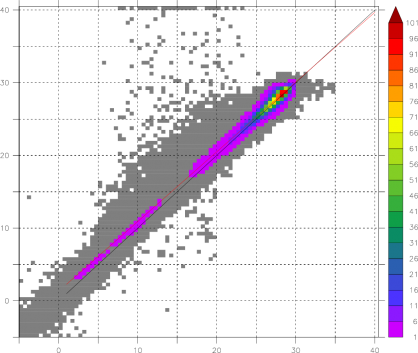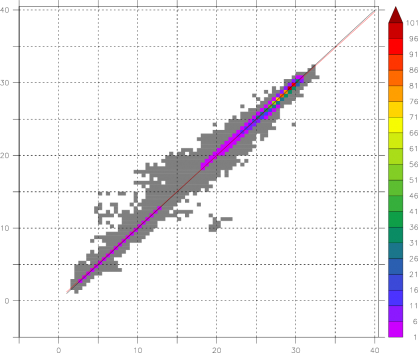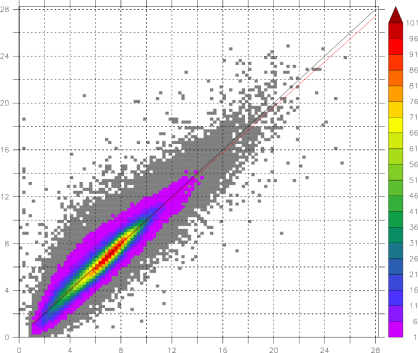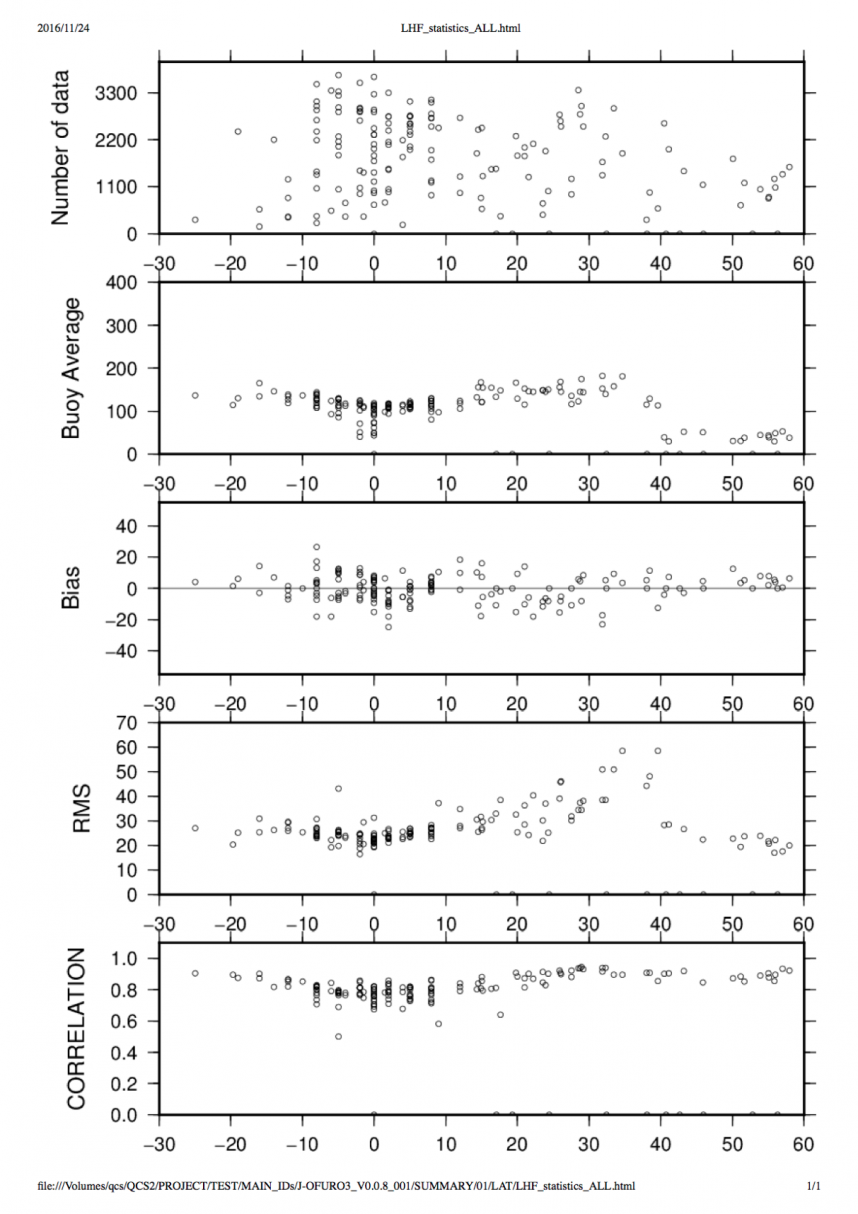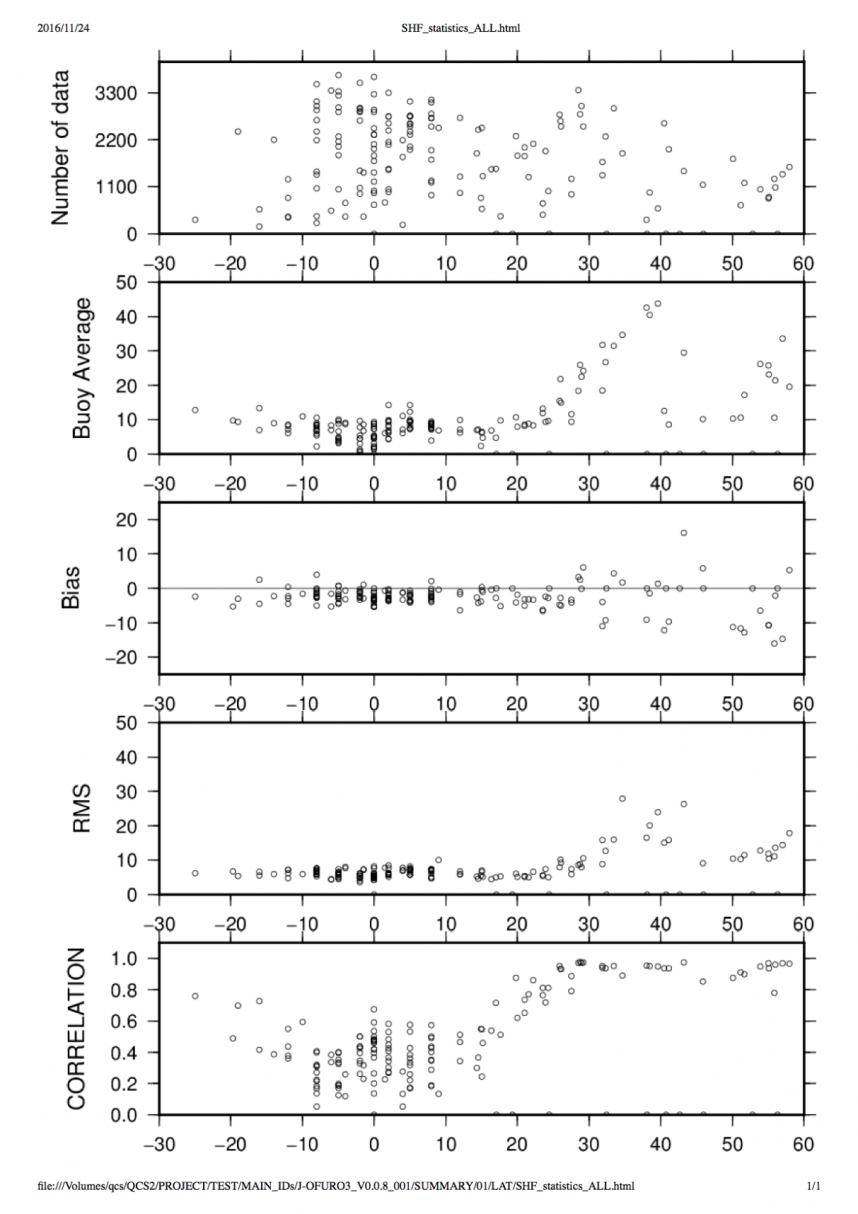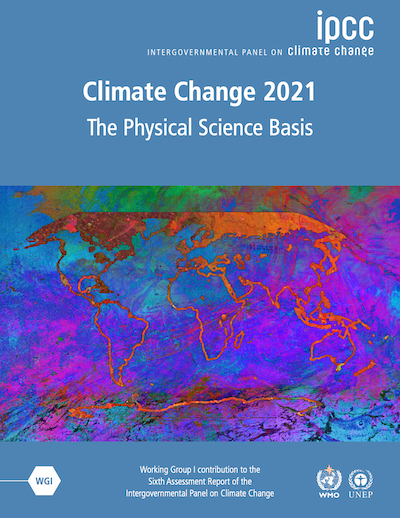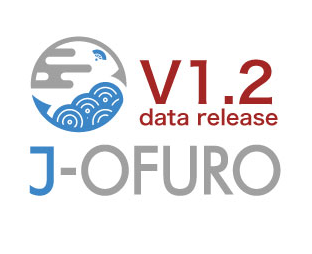V1.0: Summary of inter-comparison
OVERVIEW
To confirm how much J-OFURO3 has improved compared with the previous version, and to understand the differences from the other global data sets, an inter-comparison among various datasets was conducted by comparing results from Quality Checking System (QCS). The targets are five kinds of global daily data sets including J-OFURO3 V1.0 for the latent heat flux (LHF) and sensible heat flux (SHF). The period of the inter-comparison is a year of 2008. While the QCS contains in situ data for 25644 days from 114 surface moored buoys in this period, the in situ data for only 17064 days, which are commonly available in five kinds of data sets, were used for the inter-comparison. By the inter-comparison of mean fields, the difference among five kinds data sets was relatively small and within +- 7 W/m^2. The largest (negative) bias for LHF was -6.5 W/m^2 in OAFlux. The largest bias for SHF was 5.0 W/m^2 in IFREMER. By the inter-comparison of variability, first, clear is a significant improvement of J-OFURO3 from J-OFURO2. The RMS error is 26.8 W/m^2 improving about 10 W/m^2. Second, the J-OFURO3 shows the most accurate in variability compared with other satellite products. However, significant improvement was not found for SHF. This is because there is no significant change in air temperature estimate in J-OFURO3 from J-OFURO2. The differences in variability of SHF among the data sets were relatively small and 5–9 W/m^2.
INTRODUCTION
This page introduces a summary of an inter-comparison of global data set of satellite-derived turbulent heat fluxes including J-OFURO3 V1.0. You may confirm how much J-OFURO3 has improved compared with the previous version. In addition, you may also understand the differences among satellite-derived products including J-OFURO3.
TARGET DATASETS
The inter-comparison was conducted for a year of 2008 using following five kinds of datasets.
All datasets are gridded daily mean datasets and publicly available on-line.
Spatial gird is regular and the size is 0.25 degree except for OAFlux which provides a 1.0 degree grid data set.
Any pre-processing like converting gird size was not carried out in this inter-comparison.
| dataset name | type | spatial grid size | version |
|---|---|---|---|
| J-OFURO3 | satellite | 0.25deg. | V1.0 |
| J-OFURO2 | satellite | 0.25deg. | HF004 |
| GSSTF3 | satellite | 0.25deg. | v3 |
| IFREMER | satellite | 0.25deg. | v3 |
| OAFlux | satellite+reanalysis | 1.0deg. | v3 |
RESULTS
Inter-comparison results are shown here. The results of comparisons with in-situ buoy observations by Quality Checking System (QCS) are shown for each target dataset. The comparison results for mean fields are shown as bias bar-charts. The comparison results for variability are shown as Taylor diagrams.
MEAN FILELD: BIAS
The inter-comparison results for mean fields of LHF and SHF are shown as bias bar-charts.
The bias values were calculated by comparison with in-situ buoy observations in the global ocean.
VARIABILITY: Taylor Diagram
The comparison results for variability of LHF and SHF are shown as following Taylor Diagrams.
X and Y axes of the Taylor diagram show standard deviation. The standard deviation for in situ buoy observation is shown as a red dot line. The contour lines with a center of the mark "X" (and a red triangle) on the X-axis show RMS errors. Angle from x-axis shows correlation coefficients between buoy and each product.
Units of standard deviation and RMS error are W/m^2.
The five circles are plotted on a Taylor diagrams based on statistics obtained by the comparison between in situ buoy observation and each five product.
Colors of circles and products:
Red: J-OFURO3 V1.0
Green: J-OFURO2
Blue: GSSTF3
Yellow: IFREMER v3
Purple: OAFlux v3

